
Marie Ann Falconer | MYLA Siberian Huskies
Marie Ann Falconer is the breeder behind MYLA Siberian Huskies. Read about the kennel’s beginnings, the sires, the dams, and much more!

Home » Dog Breeds » Whippet Dog Breed
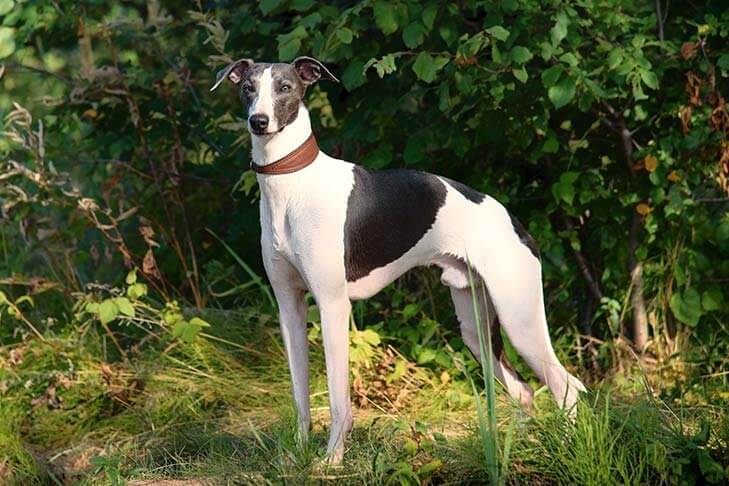


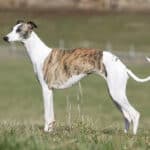
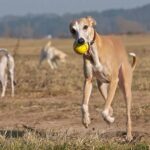

The Whippet is a quick and beautiful purebred recognized for its incredible speed and gentle temperament. The breed was created in England for coursing hares, a pastime which later became outlawed. Today, these sighthounds chase lures for sport. This breed has a slim frame and a sleek coat, and a great desire to chase moving objects. Since it is characterized by a graceful sleekness, the name Whippet has become synonymous with grace.
Hound
18 – 22 Inches
25 – 40 Pounds
12 – 15 Years
| Country of Origin | England |
|---|---|
| Bred For | Hunting Hares, Racing, Companionship |
| Known For | Intelligence, Speed, Gentle Nature, Gracefulness |
| Popularity | High |
| Temperament | Friendly, Gentle, Intense During Pursuits |
| Activities | Coursing, Therapy Dog, Conformation Shows, Dog Sports |
The mild-mannered Whippet is a very successful member of the lightning-fast group of sprinting canines known as sighthounds. However, unlike some breeds within this clan, the Whippet is not much more than a couple hundred years old. This medium-sized breed was first developed in England during the late 1700s by crossing Greyhounds with terriers.
North-country coal workers enjoyed dog racing and rabbit hunting on their days off, but they couldn’t afford to feed a large dog. Their solution was to cross Greyhounds with smaller dog breeds, producing dogs that competed in races across an open field. Later, when chasing rabbits became outlawed, the dogs chased rags or pieces of cloth.
The Whippet was known as the “Poor Man’s Racehorse” and the “Lightning Rag Dog” in its early days because it would chase a rag trailed along a straight course. This early type of lure coursing supported dogs that eventually produced the fastest breed in the world relative to its size.
The Whippet as a breed was recognized in 1891 by the Royal Kennel Club in Great Britain. The American Kennel Club registered the breed somewhat earlier, in 1888, and stories indicate Whippets were brought to America by English mill workers.
In terms of height, male Whippets measure between 19-22 inches and females are between 18-21 inches tall. Both males and females weigh within a range of 25 to 40 pounds, with females being smaller.
The Whippet displays a fit and slender build, denoting both speed and elegance. The breed is muscular without appearing coarse, and its graceful silhouette is a clear indication of its sporting heritage. The backline runs smoothly from the neck to the tail in a series of alternating S-curves, with a tuck up of the underline that declares this dog an unmistakable member of the sighthound family. Fit for function all but defines the Whippet.
Texture: The single coat of the Whippet is short and smooth and lies close to the body. The texture is firm but only moderate protective.
| Standard Color | |
|---|---|
| Black | ee |
| Blue Brindle | ee |
| Blue Fawn | ee |
| Fawn | ee |
| Fawn Brindlee | ee |
| Red | ee |
| White | ee |
| White & Fawn | ee |
| White & Red | ee |
| Red Brindle | ee |
| Sable | ee |
| Black Brindle | ee |
| White & Blue Brindle | ee |
| White & Red Brindle | ee |
| White & Fawn Brindle | ee |
| Seal | ee |
| Standard Marking | |
|---|---|
| Black Mask | ee |
| White Markings | ee |
| Blue Mask | ee |
| Water Marked | ee |
| White Markings, Blue Mask | ee |
| White Markings, Black Mask | ee |
| Black Saddle | no |
A Note About Color: The Whippet is one of the most colorful of all dog breeds. This sighthound’s base coat color may be fawn, red, orange, tan, cream, black, or blue. Markings may appear as brindle with black stripes or brindle with bluish stripes, a black or blue mask, watermarking, sabling, and varying amounts of white. A dog may be all-white or only have white toes and/or tail tip. Ticking on white areas is acceptable; however, definite spotting and the Harlequin pattern are not. Additionally, black and tan, tricolor, and liver-colored coats are not seen on a purebred Whippet, and the merle pattern is indicative of a cross with another breed.
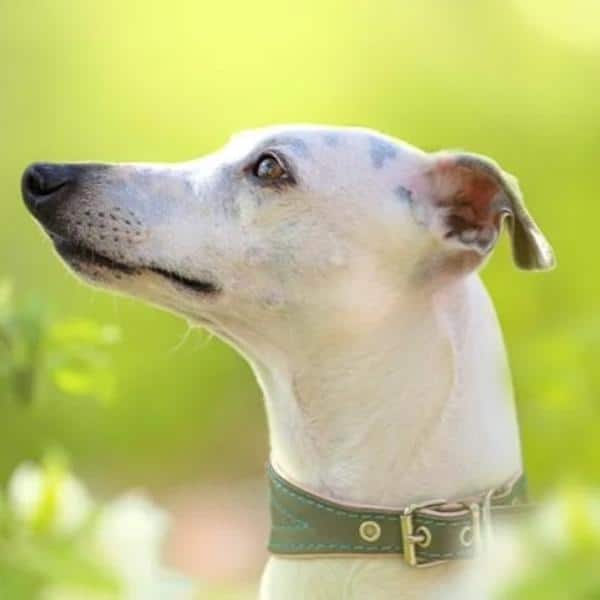
The tail of the Whippet is long and tapering. It reaches the inside of the hocks when extended downward. The tail is carried low when the dog is moving, with only a modest upward curve. Even when the dog is excited, the tail does not extend above the top of the back.
The Whippet is a gentle, playful, and affectionate sighthound. Among the breed’s positive qualities are its reluctance to bark and its playfulness with children of all ages. With these qualities in mind, this medium-sized breed has long been popular with families as well as with singles and the elderly. However, sharing a home with this fast and fit breed comes with specific responsibilities and factors that need to be considered for the sake of everyone’s happiness and well-being.
To the untrained eye, the Whippet usually appears as a “skinny“ breed. However, like all sighthounds, the breed’s dynamic frame is built for speed and isn’t capable of carrying excessive weight. These dogs are powerful and muscular, despite their slim silhouettes. Responsible breeders understand this and are the best sources for acquiring the healthiest Whippet possible. Responsible breeders screen their stock for diseases and place their puppies in homes that can maintain a similar degree of care throughout each dog’s lifetime.
Lifespan: The average lifespan of the Whippet is 12 to 15 years, but with proper care, a balanced diet, and regular check-ups, many can thrive beyond these years.
Although generally a healthy breed, some Whippets can be prone to certain health conditions, including:
The Whippet is amiable, gentle, and elegant yet powerful. The breed enjoys daily walks and always appreciates the opportunity to run around in a fenced yard. This sighthound is generally quiet at home, and between walks and bursts of energy, this hound loves to stretch out on a comfortable chair and relax for long hours.
The Whippet typically gets along well with people and other dogs, although early socialization is important. Prey drive is strong in this breed, so it is better to keep these dogs away from cats indoors. Also, because of that prey drive, it’s recommended to always walk this breed on a leash. If a Whippet sees something worth chasing, it will disregard commands such as “stay” and “come” and eagerly pursue its intended quarry.
Because the Whippet rarely barks, it can be a suitable choice for people living in apartment buildings with a lot of neighbors. The breed is not much of a guard dog, however, due to its amiable personality. And despite its friendly nature, it’s still important to expose a Whippet to different people, sights, sounds, and experiences from a young age. With early training and socialization, this gentle and patient breed can become an ideal playmate for older children and the perfect addition to any family.
The Whippet should be fed a high-quality dog food, purchased commercially or prepared at home with a veterinarian’s supervision. The optimal diet would include a combination of high-quality protein, healthy fats, vitamins, minerals, and fiber from vegetables and berries.
An adult Whippet needs 1 to 1.5 cups of food per day, divided into two meals. The dog should be fed at regular intervals throughout the day. Appropriate food must be chosen based on the age, size, and activity level of each dog.
Some Whippets can be prone to obesity, so it’s essential not to overfeed. Always measure each dog’s food and monitor its weight periodically. Avoid giving too many treats and feeding table scraps or human food, which can be too high in fat.
It is important to feed the Whippet high-quality ingredients. Low-quality food can promotec health problems, from obesity to various skin issues.
Whippets are intelligent dogs and inherently happy to please. This often makes training a relatively straightforward process. Being sighthounds, however, they have a strong prey drive and can sometimes become distracted, especially if something catches their eye and tempts them to give chase. Hence, it’s crucial to incorporate consistent, positive reinforcement techniques when working with a Whippet.
These dogs respond best to gentle, rewards-based training. Harsh methods or negative reinforcement can prove counterproductive, potentially leading to a fearful or skittish Whippet. Early socialization is essential for the breed, which will expose puppies to a variety of people, places, sounds, and experiences while they’re still young. This may all but guarantee they’ll grow up to become well-adjusted adults.
Due to the breed’s prey drive, teaching a reliable recall is critical for these fast-moving hounds. While they love to run and chase, it’s essential that they learn to return when called, especially in unfenced areas. It should be noted, however, that training a good recall can be at but impossible with a Whippet.
Additionally, Whippets can excel in various dog sports such as Lure Coursing and Agility. Engaging these dogs in such activities not only reinforces training, it also provides them with a productive outlet for their energy and their need to run.
Whippets are sprinters by nature. This means the breed can get occasional bursts of energy throughout the day that need to be satisfied with short but quick runs. With the breed’s moderate to high levels of energy, 40 minutes of walking each day should fulfill most of its exercise needs. This can be divided into several shorter strolls.
| Energy Level | Moderate to High |
|---|---|
| Exercise Requirements | 2 Hours/Day (Minimum), Daily Walks, Regular Exercise, Vigorous Running, Playing with Another Dog, Mental Stimulation |
If a Whippet is not getting enough exercise, it can act out in a variety of ways. A bored dog might appear hyperactive, start gaining weight, become destructive or withdrawn, or even bark, which is not something the breed usually does often. If boredom is suspected, some exercise other than daily walks should be added. The good thing is that the new activities can be fun for both the person and the dog.
Playing ball can be a great exercise game for a Whippet. As it is in the breed’s nature, these dogs will probably start chasing the ball, and some can even be encouraged to bring the ball back. Overall, any exercise that contains a lot of short, fast runs and some toys is great for a Whippet.
Whippet puppies should be offered five minutes of exercise for every month of age, which means a four-month-old puppy will need 20 minutes of daily exercise. It’s important to keep in mind that walking is considered exercise and not an addition to an exercise regimen.
The short, smooth coat of the Whippet needs little maintenance beyond general coat care. However, because of the breed’s thin coat, the skin is not as well-protected as that of many other breeds. For this reason, Whippets shouldn’t be bathed too often.
| Coat Type | Single, Short, Smooth |
|---|---|
| Grooming Requirements | Weekly Brushing, Occasional Bathing, Routine Ear Cleaning, Periodic Nail Trimming, Regular Tooth Brushing |
Although they are short-haired, Whippets do shed. Weekly brushing can aid in the shedding process and will also allow time to check for injuries, rashes, and signs of infection. Grooming should begin at a young age so that a puppy learns to look forward to the routine.
A Whippet’s teeth should be brushed at least two or three times a week to remove food and to prevent plaque buildup. To avoid gum disease and bad breath, daily brushing and/or dental sticks are generally recommended.
A Whippet’s nails should be trimmed once or twice a month as needed. Short, neatly trimmed nails will keep the feet in good condition. Likewise, the ears of a Whippet should be checked periodically and cleaned with a veterinarian-approved cleanser.
Whippets are gentle souls, known for their speed but also for their calm and amiable personalities. This combination of traits makes them a perfectly adaptable breed. If they are outside, Whippets will gladly use the opportunity to do sprints and explore. Inside, to the contrary, they will turn into couch potatoes and enjoy their time just lying around.
Whippets are great medium-sized apartment dogs. They don’t bark as much as other breeds and they like the comforts of home. Playing with the kids can be their favorite activity too, almost as much as following their favorite person around. With this companionable nature in mind, these dogs don’t like being alone for too long.
Low body fat and a short coat makes the Whippet a breed that’s more suited for warm weather. In colder climates, a cozy dog coat or sweater is a necessary addition to winter walks.
Whippet puppies have wonderful personalities. They are curious and playful, and they have no problem approaching strangers and letting people hold them. When choosing a puppy to bring home, it’s essential to always consider the breeder’s experience with this all-important decision.
Before bringing home a Whippet puppy, make sure to provide a safe and nurturing environment. Since the breed is curious from a young age, constant supervision is required to keep the pup from harm. Providing safe and soft toys will help with teething and add variety to every playtime.
During the puppy’s growth stages, nutrition is critical. It’s best to feed a Whippet puppy a high-quality food that will ensure it receives all the nutrients needed for healthy growth. Setting a regular feeding plan is also a good idea, as puppies are always growing and need more food than adult dogs.
Regular veterinary check-ups are crucial during the first year of life. Vaccinations, deworming, and basic health checks should be performed to ensure the puppy is growing normally.
Important aspects of puppy care include basic training and socialization. Training puppies at an early stage will encourage them to grow into well-behaved adults. Early and consistent socialization will instill confidence and reduce the chances of fear or aggression later in life.
The Whippet is a sighthound that excels in speed-based activities. These powerful and graceful dogs are agile and versatile too. They can climb, jump and run with the best competitors in an exciting array of dog sports.
The Whippet is recognized by the world’s leading registries and kennel organizations, which categorize the breed into a specific Group based on its unique characteristics. This breed is recognized worldwide under the following Group designations:
| Organization | Group Designation |
|---|---|
| AKC (American Kennel Club) | Hound |
| UKC (United Kennel Club) | Sighthound and Pariah Dog |
| CKC (Canadian Kennel Club) | Hound |
| ANKC (Australian National Kennel Council) | Hounds |
| RKC (The Royal Kennel Club) | Hound |
| FCI (Fédération Cynologique Internationale) | Group 10 – Sighthound; Section 3 – Shorthaired Sighthound |
The ideal Whippet is described by a Breed Standard that is approved by each of the world’s leading registries and kennel organizations. The Breed Standards for this breed may be found in the following links:
| Organization | Breed Standard |
|---|---|
| American Kennel Club | AKC Whippet Breed Standard |
| United Kennel Club | UKC Whippet Breed Standard |
| Canadian Kennel Club | CKC Whippet Breed Standard |
| Australian National Kennel Council | ANKC Whippet Breed Standard |
| The Royal Kennel Club | RKC Whippet Breed Standard |
| Fédération Cynologique Internationale | FCI Whippet Breed Standard |
The most important thing when searching for a Whippet is finding a reputable dog breeder. Reputable breeders are dedicated to producing healthy, well-socialized puppies that will make excellent companions. They will test their breeding stock for health issues, socialize their puppies from birth, and offer a lifetime of support.
The American Whippet Club (AWC) is a national breed club operating under the broader umbrella of the American Kennel Club. It promotes responsible breeding, offers resources, organizes events, and supports Whippet-related health research.
The Whippet Club in the United Kingdom was formed in 1899 and is the oldest Whippet club in the world. Also, it is the only breed club in Britain to provide for all working Whippet disciplines.
The National Whippet Group of Canada (NWCC) is the Canadian Kennel Club’s (CKC) national organization for the breed. The club’s aim is to unite Whippet enthusiasts for mutual support that benefits the breed.
Joining or engaging with these clubs provides Whippet enthusiasts with a wealth of information and opportunities to connect with others who share the same passion for this enchanting breed.
A Whippet can, regrettably, sometimes find itself in need of a new home due to unforeseen circumstances, such as owner illnesses, financial hardships, or behavioral challenges. Whippet rescue groups rise to the occasion, ensuring that these loyal companions find loving forever homes while also providing education to potential adopters.
Northern California Whippet Fanciers Association is a rescue group that operates in the United States. This group encourages people interested in the breed to come to their events and meet the breed. All operations are done under the National Whippet Rescue group.
In Canada, The National Whippet Club of Canada is the national breed and rescue club working under the Canadian Kennel Club. The organization’s volunteer’s have successfully found homes for many Whippets, emphasizing the importance of the right match between dog and owner.
Just Whippet Rescue is a rescue charity operating in the United Kingdom. This group is a non-governmental rescue that shelters, rehomes, and rehabilitates any Whippet in need.
The Whippet is a medium-sized sighthound bred to course fast-moving game at a high rate of speed. The breed’s aerodynamic form, with its series of undulating S-curves, indicates a high degree of elegance as well as acceleration. A short coat provides little resistance and comes in a seriously wide array of color combinations and markings.
Whippets shed, but it’s usually minimal due to the breed’s short, fine coat. Regular grooming, even just a weekly brushing, can help to manage and reduce the amount of hair that’s shed. Using a rubber grooming mitt or chamois cloth can be especially effective for removing the loose hairs.
Yes, Whippets are known to be affectionate, friendly, and good with families. They are often gentle with children and are generally loving companions. It’s important to note that Whippets are agile runners, so providing a securely fenced yard for playtime is crucial to ensure their safety.
Whippets are generally healthy, but like all dogs, they can be susceptible to certain health conditions. Some potential health concerns include heart issues, eye disorders, and some skin conditions. Regular vet check-ups and a balanced diet can help to maintain their overall health.
Whippets are typically easy keepers, as the breed is generally known for its calm and friendly nature. However, like all dogs, individual temperaments can vary, so proper socialization and training from a young age are essential.
No dog is truly hypoallergenic, and Whippets are not considered a hypoallergenic breed. They have short, fine hair that sheds; however, their shedding is relatively minimal when compared with many other breeds.
Yes, Whippets can be good apartment dogs. While they are known for their speed and enjoy regular opportunities to run, they are also quite calm indoors and are known to be couch potatoes. Regular exercise is essential, but these dogs are certainly adaptable.
Whippets are not used as guard dogs. They are more friendly and docile by nature. While they might alert you with a bark to someone approaching, they’re not inherently protective.
Whippets generally get along well with other dogs, especially if they are socialized properly from a young age. However, given the breed’s history as a hunting dog, some Whippets can have a high prey drive and will chase smaller animals. It’s always a good idea, therefore, to introduce individual dogs slowly and supervise their interaction with other companion animals.
If the Whippet is a smaller version of the Greyhound, the Italian Greyhound (IG) might well be considered a smaller version of the Whippet. Of course, each breed is distinctly its own, with the IG being smaller and more slender than either of its British cousins. The Italian breed is essentially a rather delicate lap dog, though it is still quite capable of quick bursts of speed when it feels the need to chase something in its sights.
Yes, Whippets are generally easy to train due to their intelligence and inherent willingness to please. They typically respond best to gentle, rewards-based training methods. However, the breed’s strong prey drive can sometimes be a distraction, so consistency and early socialization are essential for best results.

Marie Ann Falconer is the breeder behind MYLA Siberian Huskies. Read about the kennel’s beginnings, the sires, the dams, and much more!
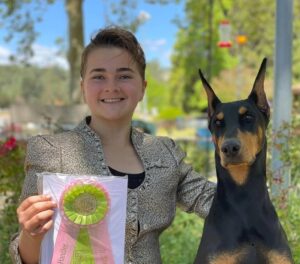
Interview with a Junior Handler, Audrey Boyer. Audrey shares her thoughts on various topics regarding the Junior Showmanship ring.
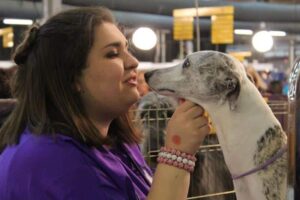
Meet Baylie Smith, a fourth-generation breeder passionate about raising healthy and happy Whippets. Join her in spreading puppy love!

Insights from an Owner Handler, Michelle Ewing. Read about her opinions on various topics about dog handling in the modern show ring.

Insights from Owner Handlers: Kim and Paul Norton. Read about their opinions on various topics about dog handling in the modern show ring.
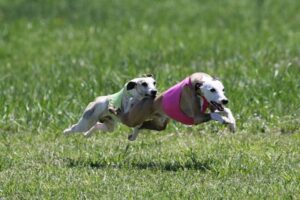
Explore the sport of Lure Coursing and find out what combination of characteristics makes the Whippet breed among the best for the sport.
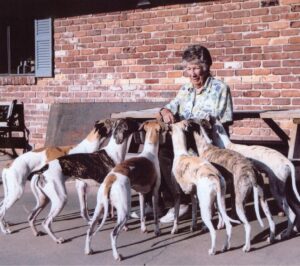
An Interview with Carol Harris | Bo-Bett Farm – Carol Harris of the Ocala, Florida, area passed away on August 7, 2021 at age 98.

Showsight Contributing Author, Allan Reznik sat down with renowned Whippet Breeder Iva Kimmelman – Merci Isle Whippets for a lively
The best way to ensure a long and happy relationship with a purebred dog is to purchase one from a responsible breeder. Not sure where to begin?
Contact the National Parent Club’s Breeder Referral Program, which is listed on the AKC Breeder Referral Contacts page.
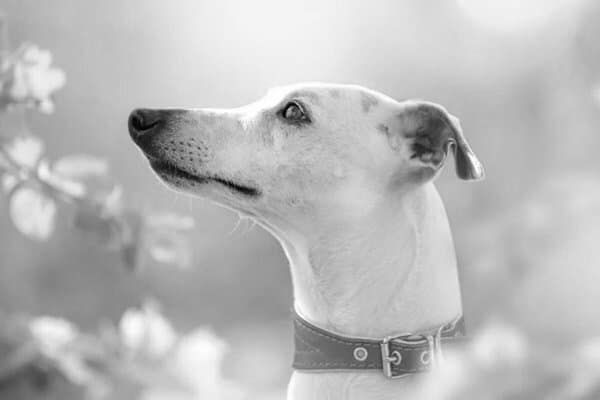

"*" indicates required fields
Showsight Magazine–the world’s most influential purebred dog publication since 1992. Each issue reaches a global audience dedicated to preserving the history and health of purpose bred dogs. Filled with award-winning editorial focused on news and insights from the dog show community, top breeders, handlers, AKC Judges, and more!